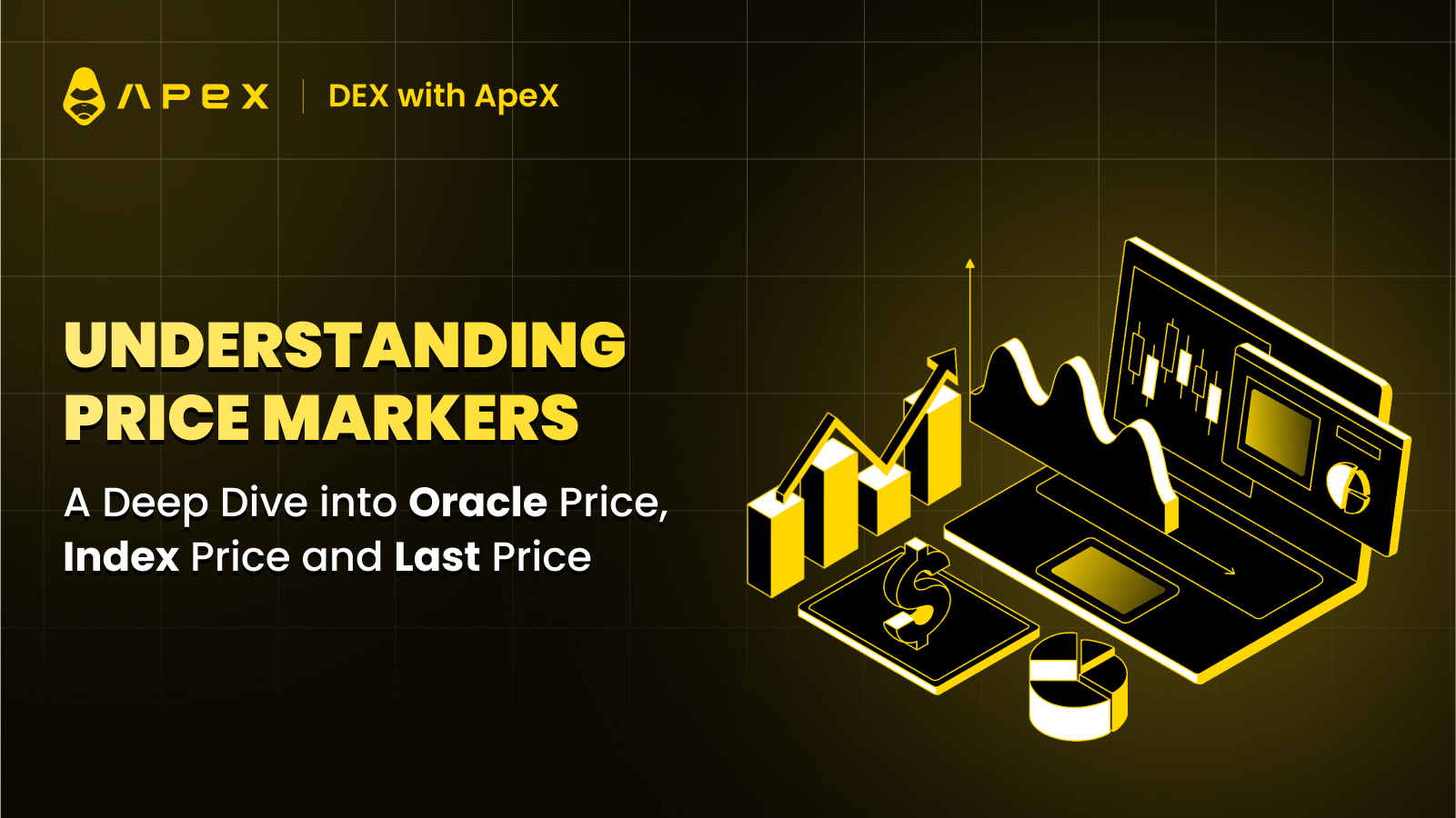In the realm of decentralized perpetual trading, where precision is paramount, traders rely heavily on 3 prices to make informed decisions: Last Price, Index Price, and Oracle Price.
Unsure of the difference between these prices? This guide has you covered! We'll explain what each price represents, why it's important, and how knowing them can empower you to execute better trades on ApeX Pro.
Let's dive in.
Types of Prices Used in Derivatives Trading
Last price, index price, and oracle price represent important tools in derivatives trading, with each of these prices playing a unique role, providing traders with fundamental basis for informed decision-making and effective risk management.
Last Price represents the most recent transaction price for a contract. It provides a real-time snapshot of market activity and is updated with every new trade. This price is directly relevant when placing orders. Understanding its dynamics will help traders identify better entry and exit points when making trades.
Index Price is an average price derived from a selection of exchanges, often used as a reference for determining the market value of an asset. It offers a more comprehensive view than the Last Traded Price, which only reflects prices derived from a singular exchange.
Oracle Price in decentralized exchanges serves as a vital mechanism facilitating the provision of accurate price feeds for various tokens and assets traded on the exchange. These price feeds reflect the current market prices, enabling users to make informed trading decisions.
Practical Applications of Key Price Markers
Let's now dive into the practical applications of these prices and how they work on ApeX:
The last price on ApeX represents the last traded price on ApeX Pro's orderbooks. Since the last price reflects the latest transaction price for a contract, it's most beneficial for traders engaged in day trading and scalping strategies. Employing the Last Price as a trigger for Take Profit (TP) and Stop Loss (SL) is particularly effective in these short-term trading approaches.
The index price on Apex Pro is determined by a weighted average of spot market prices from leading exchanges. These weights are dynamically adjusted every 4 hours, aligning with the trading volumes of these exchanges. This methodology enhances the accuracy of the index price, reflecting real-time market conditions more precisely. Utilizing an Index Price assists users in sidestepping exchange-specific fluctuations, making it advantageous for swing positions.
Oracle price is a crucial component of the ApeX Pro decentralized exchange, as it ensures that traders have access to the most up-to-date price feeds. The oracle price provided on ApeX is sourced from Stork Network, and is based on spot prices obtained from various CEXs. On ApeX, the oracle price is used to calculate your margin and liquidation prices. The estimated liquidation price is influenced by your leverage and margin. If the oracle price reaches the liquidation price, your position will go through forced liquidation.
With a clear understanding of last price, index price and oracle price you'll gain valuable tools for informed decision-making in your perpetual trading journey on ApeX Pro. These diverse price indicators offer crucial perspectives on market sentiment, enabling you to evaluate potential risks and opportunities more effectively and make well-informed trading choices.
Now equipped with this information, venture forth and navigate the market confidently!

